USA and Canada
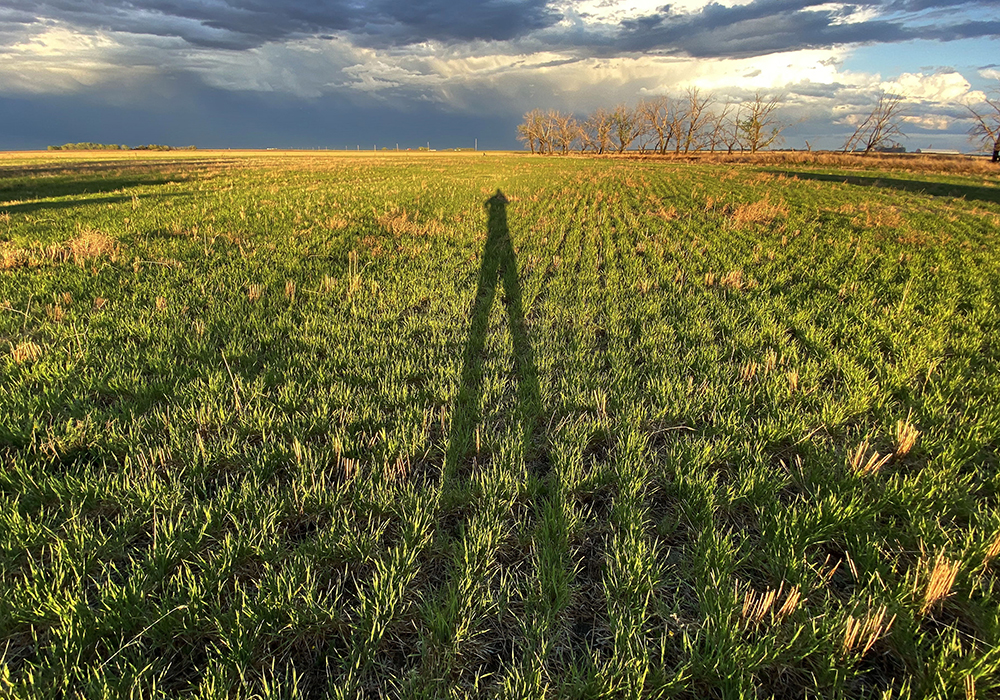
Market shrugs off poor U.S. wheat start
The wheat market is shrugging off one of the worst starts to the U.S. winter wheat crop in decades.
An estimated 34 percent of the crop was rated good-to-excellent as of Nov. 29, which was the U.S. Department of Agriculture’s last weekly Crop Progress report for 2022.
It is the second worst score dating back to 1987 for that time of year.
Following the release of that report, a “devastating” freeze hit Kansas and Texas during the second last week of December. Kansas wheat futures had a ho-hum response to all the bad news coming out of the southern U.S. Plains.
“Normally you would see a major reaction,” said Jim Roemer, meteorologist and commodity adviser with Best Weather Inc.
“This is really the worst wheat crop in the Plains in at least 20 years and now you have a freeze on top of that.”
Read More…
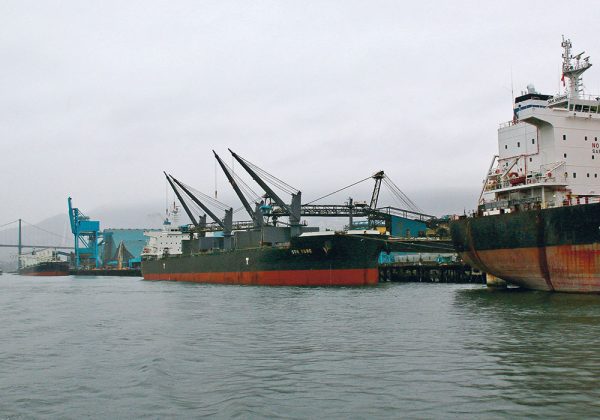
Vancouver’s grain-in-the-rain problem must be solved
Sinclair Harrison used to be astounded when he’d hear about how grain loading in the Port of Vancouver would be halted by rain.
The idea that millions of tonnes of farmers’ grain could be stalled from getting onto ships due to rainy weather stunned the pragmatically minded Saskatchewan farm leader. After all, doesn’t it rain quite often in Vancouver?
“Get some Saskatchewan farmers out there with some tarps and they’d solve that problem pretty fast,” was his typical exasperated response to the “it rained” excuse for bad crop movement through the system. Back in the 1990s and 2000s that used to drive him crazy.
Alas, the solution isn’t so simple, it seems. In fact, things have gotten trickier since 2007, when arbitrators found that longshore workers had legitimate safety concerns about working around open hatches on cargo ships in wet and slippery weather. More than just tarps to keep the grain dry, terminal operators now must ensure the workers are safe by having them erect rails and barriers to ensure nobody ends up plummeting into the hold.
Read More…
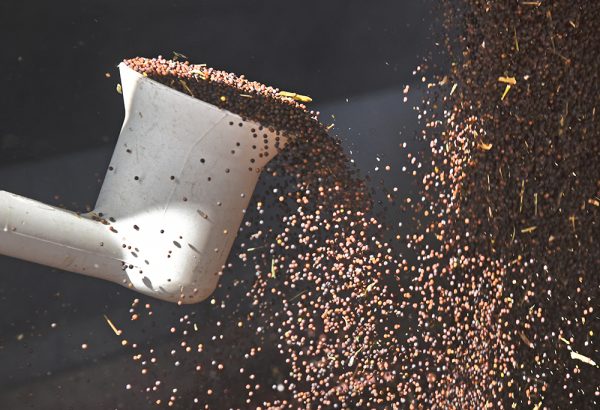
Ag Canada expects higher canola stocks
Latest carryout estimate made despite smaller crop because exports and domestic use are also expected to be down
Canadian canola ending stocks for 2022-23 were revised higher by Agriculture Canada in its latest supply-demand estimates released Dec. 16.
The larger carryout projection came despite a downward revision to production, as both exports and domestic use were down from the November report.
The department now sees canola carryout of 800,000 tonnes for the current marketing year, which would be up from the November forecast of 500,000 tonnes and in line with the 2021-22 ending stocks of 875,000 tonnes.
Updated production estimates from Statistics Canada included in the latest Agriculture Canada report lowered canola production to 18.2 million tonnes from an earlier estimate of 19.1 million tonnes.
Read More …

Hybrid wheat hitting U.S. fields as war, climate threaten global food supplies
CHICAGO, Dec 21 (Reuters) — Global seed maker Syngenta will release a new type of wheat developed with complex cross-breeding techniques in the United States next year, beating out rival companies that are also trying to develop higher yielding wheat at a time of diminishing global grain supplies.
The hybrid wheat, which combines positive traits from two parent plants, arrives after severe weather slashed grain harvests and the Ukraine war disrupted shipments to hungry importers, sending prices to record highs this spring.
Syngenta, which began working on hybrid wheat in 2010, told Reuters enough seeds will be on the market next year for U.S. farmers to plant about 5,000 to 7,000 acres.
Though a tiny fraction of the nation’s plantings, the previously unreported total represents the company’s biggest ever release of hybrid wheat. It could open the door for larger seedings in 2024 and beyond, as war and climate change make the world’s food supplies increasingly vulnerable.
Read more…
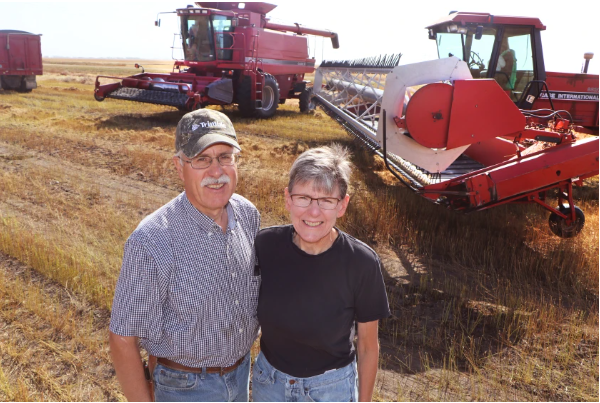
From high protein to sustainability, food trends drive demand for niche crops
Consumers’ appetite for certain foods has opened the door to more markets for northern Plains farmers to sell their commodities.
Demand has boosted prices for the crops, which include field peas, oats and canola, grown in Minnesota, North Dakota and South Dakota on varying numbers of acres.
Paul and Diane Overby operate Lee Farms, near Wolford, North Dakota, where they farm 1,300 acres that include those three crops and sunflowers, flax, hard red spring wheat and soybeans. Instead of planting large fields of two or three different crops, they produce seven or eight grain and row crops.
The Overbys produce the crops on fields that average 70 acres, which is at least half the size of the fields on which many farmers raise conventional crops such as corn. The smaller fields are necessary because the couple produces more than half a dozen crops on their 1,300 acres of tillable land.
Over the years, the Overbys have tried a variety of crops. A few, like faba beans, they no longer grow, but most have become permanent parts of their rotations.
Read more…
New Zealand

Mood of farmers subdued, but public support holds strong
People need hope that there will be an end to the fight, that life will improve, that there will be answers. Whatever the scenario, it is hope – and support in that hope – that gets us through.
The mood at the National Agricultural Fieldays at Mystery Creek this year was marginal.
It appeared that after almost three years of grind due to short-staffing and increased paperwork, farmers were wondering about the point of their efforts and rural professionals were feeling overwhelmed by the pressures on farmers.
Politicians were present in force to gauge the mood of the country and were taking all opportunities to hear different perspectives.
Many of the people attending were also focussed on talking with others to check what they were experiencing, and ground truth their own feelings.
Read More here...
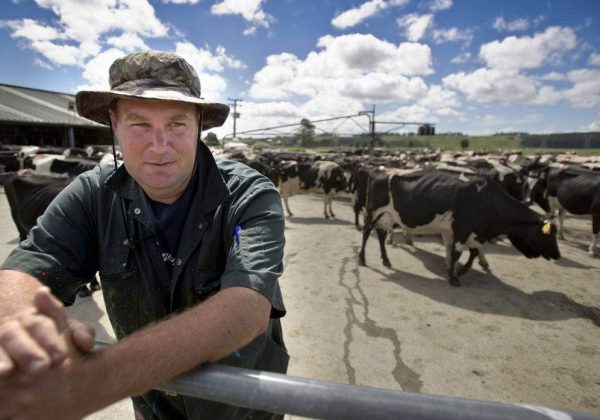
Farm debt and mortgages pushing up cost to grow food
Mortgage rates, inflation and overdraft costs are pushing up the cost of producing food and eroding farm profits, farmers say.
A November survey by Federated Farmers, answered by about 1200 farming businesses, showed the average farm mortgage interest rate had increased to 6.29%, up from 4.59% in May this year.
It was up from 3.95% in November last year.
Federated Farmers president Andrew Hoggard said many farms carried high debt.
Since May, the average farm mortgage value had increased from $4.07 million to $4.19m, while the median increased from $2.25m to $2.5m, Hoggard said.
The average overdraft limit lifted $46,000 to $328,800, with an average interest rate of 8.59%, he said.
Read More here…
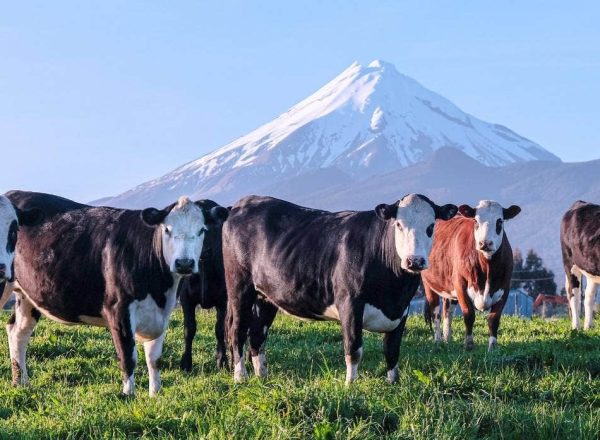
Tesco’s warning to New Zealand farmers
British supermarket chain Tesco wants to be assured that all fresh produce, meat and dairy it sells is sustainable, including that which comes from New Zealand farmers.
Sustainable agriculture manager at Tesco Alice Ritchie said the supermarket chain was the biggest buyer of New Zealand products in Britain.
She said the business wanted to get to net zero across its whole supply chain by 2050. “For us it’s important what happens in New Zealand and how it feeds into our wider reduction plans.
“Around 2025 to 2030 we want to make sure that 100% of what we source in terms of fresh produce, meat and dairy is environmentally accredited. What that means for our New Zealand farmers we are not sure yet.”
In the year to September 30, New Zealand exported 36,340 tonnes of sheep meat to the UK, with a value of over $521 million.
Read More here…

Ardern and O’Connor promise low initial methane price, cheap nitrogen price and inclusion of riparian planting in ETS
The Labour Government has softened a plan to levy farmers for their methane and nitrous oxide emissions after a farmer revolt, promising “relatively low” prices for at least five years, ample handouts to farmers to offset the levies and the inclusion of ‘riparian planting’ trees next to waterways in the Emissions Trading Scheme (ETS).
The concessions follow a rejection by farmers of a set of ‘He waka eke noa’ proposals from the Government in early October that were forecast to substantially reduce sheep and beef farm numbers and that excluded riparian planting from the ETS. The schism between farmers and the Government came after a two-year collaborative process designed to bring farmers ‘into the tent’ to price climate emissions that make up more than half of New Zealand’s overall emissions.
The Government has also put off the hardest decisions about actual price levels until early next year and it now appears unlikely legislation to enforce the prices will be passed before the election. The Opposition has previously pledged to repeal the levies if elected.
Read More here…
Australia
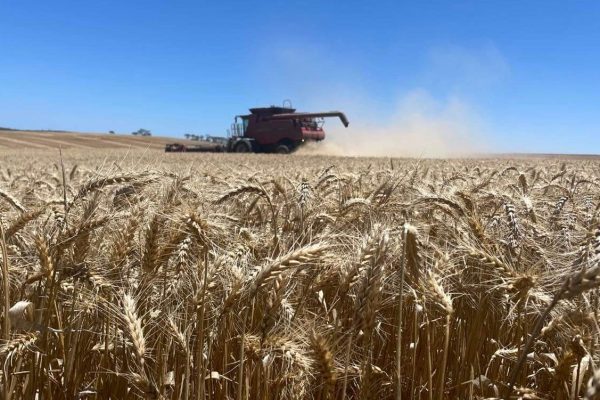
Shortfalls in Australia’s food pesticide residue monitoring raised almost a decade ago
Serious shortfalls in Australia’s monitoring of pesticide residues in food, particularly food destined for the domestic market, were identified by the federal agriculture department nearly a decade ago, documents obtained by Guardian Australia reveal.
Bureaucrats in the department expressed concern about Australia’s food monitoring as early as 2014, the documents, obtained under freedom of information laws, show.
A $25m five-year pilot program for a national produce monitoring system was set up in 2013, but scrapped when the Coalition came to power and Barnaby Joyce became minister. The results have never been released.
Testing of food sold in Australia is largely left to the fresh food markets under a self-regulatory system. In general, growers are required to submit samples once a year. There is no routine screening by state or federal health authorities or by Food Standards Australia New Zealand.
Read more here
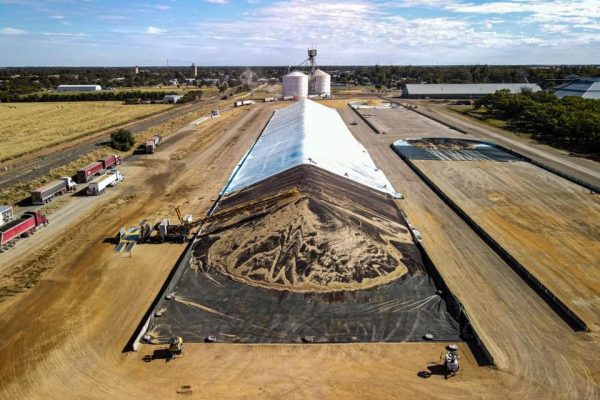
GrainCorp receivals pass 7.6Mt
THE GrainCorp network has recorded its biggest day of receivals for the season, with more than 300,000 tonnes of grain delivered on December 18, GrainCorp said in its last weekly Harvest Update for 2022 released today.
The eastern-states bulk handler said winter-crop harvest activity was now mostly complete in Queensland, and slowing around the Burren Junction, Moree and Narrabri regions in northern NSW, as growers turn their attention to summer-cropping opportunities.
Clear and drier weather conditions saw strong harvest activity continue throughout NSW and Victoria, particularly in the Junee, Temora and Wyalong regions in southern NSW, and in the Wimmera, Mallee, Swan Hill and north-east regions of Victoria.
Harvest in NSW and Victoria harvest will continue into January 2023, and a large outload program has continued across the GrainCorp network to create capacity for more receivals, with up to 240,000t of grain outloaded each week.
Read more here …
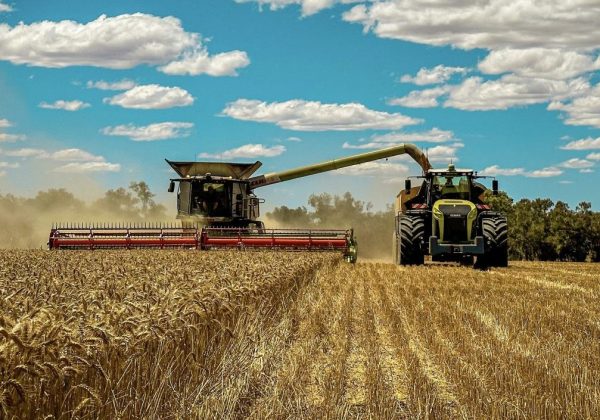
Viterra receivals pass 5.1Mt
VITERRA has now received 5.1 million tonnes (Mt) of grain into its system from the current harvest following deliveries in the week to Sunday of 1,275,341t, it said in its final weekly receivals report for the year.
At its network across South Australia and in western Victoria, the bulk handler had its busiest day for receivals this harvest on Sunday when growers delivered around 230,000t to its sites, surpassing its previous busiest day of December 2 when 226,000t was delivered.
Viterra Central region operations manager Jack Tansley said all sites in the region are now receiving.
“Our Jamestown site welcomed its first delivery for the season last week, meaning all 16 sites in the region are now receiving grain,” Mr Tansley said.
“Growers are delivering all commodities into sites in our region, with wheat now the major commodity.
Read mpore here…
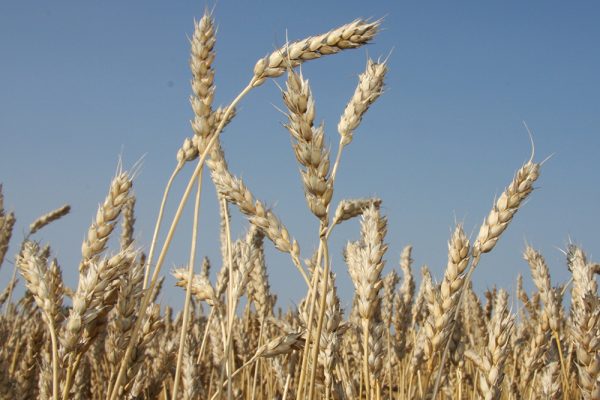
Commodities 2023: Australia’s record wheat crop to dominate Asia demand in H1
Australia is likely to start the new year with a record wheat crop harvest and dominate short-term Asian demand, while supplies from Argentina and Ukraine are uncertain. Logistical challenges and wheat quality concerns though may compromise Australian exports.
The continent is currently harvesting wheat and on track to receive its largest crop in history. The Australian Bureau of Agricultural and Resource Economics and Sciences estimated output at 36.6 million mt, 300,000 mt more than the previous 2021-22 season’s (October-September) 36.3 million mt.
Yet the third straight La Nina that brought wet conditions and boosted 2022 yields are causing havoc for producers at harvest time. Losses in some acreages are expected due to flooding, farm equipment has sustained damages, and some roads washed away in flash floods.
Read more here…
South America
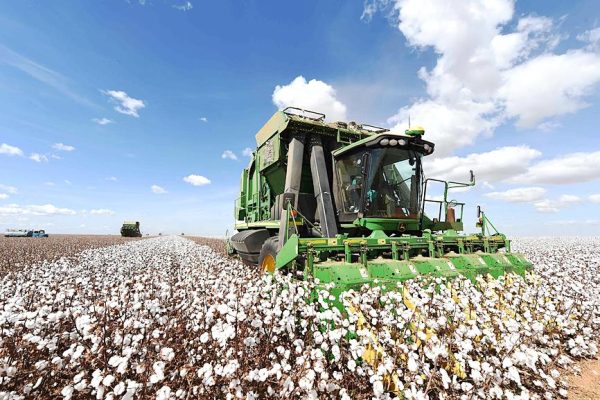
Brazil planning to become world’s largest cotton exporter, ahead of US
Brazil could become the world’s largest cotton exporter in 2023, because of an increase in the planted area helping it to surpass the United States, which could reduce sowing by 30% to make way for competing crops such as corn, soy, and wheat.
Brazilian cotton producers see the sector ready to move forward with next year’s crop, despite higher costs, in order to protect progress in Asian markets, particularly China.
While Brazilians started planting for the 2022/23 season (to be harvested the following year), Americans are still finishing harvesting the current season’s crop and making preparations for 2023/24, with harvest expected to occur in the calendar year 2023.
“We will soon be the world’s largest exporters, maybe already next year,” said Julio Cezar Busato before handing over the presidency of the Brazilian Association of Cotton Producers (Abrapa) to Alexandre Pedro Schenkel, who will direct the group between 2023-24.
Read more here…
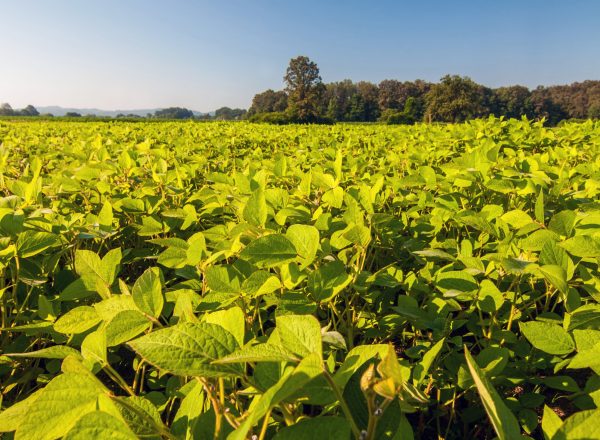
Soybeans rise, improved Argentina weather limits gains
SINGAPORE — Chicago soybean futures ticked higher on Friday, but the market was set to end the week marginally lower as forecasts of rains in drought-hit Argentina’s farm belt eased supply concerns.
Wheat firmed, with the market on track for a positive finish this week as extremely cold weather across the U.S. grain belt threatens to curb winter crop production.
“Talk of rains this weekend for Argentina plus a shift to more bearish outside market forces helped to pressure the market,” the Hightower said in a report.
The most-active soybean contract on the Chicago Board of Trade (CBOT) added 0.1% to $14.74 a bushel, as of 0334 GMT, wheat rose 0.5% to $7.65-3/4 a bushel and corn gained 0.1% at $6.61-1/4 a bushel.
For the week, soybeans are down around 0.5%, while wheat has added 1.6% and corn is up 1.3%.
Read more here…
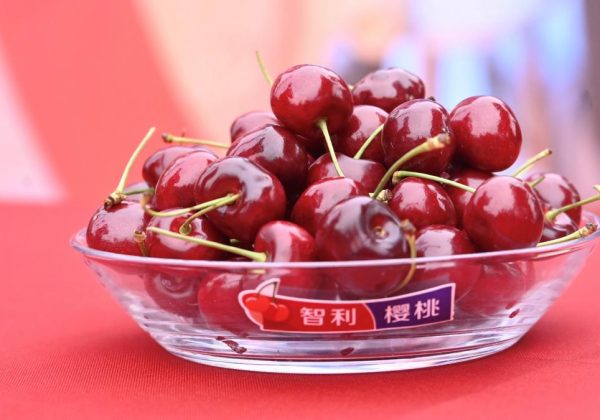
Chilean Cherries in Hot Demand During Double 12 Festival
The “Double 12” shopping holiday that takes place annually on Dec. 12 is one of the busiest shopping days of the year in China. This year, the Double 12 holiday coincided with the arrival of this season’s first sea shipment of Chilean cherries. All of China’s leading e-commerce portals, including JD.com, Tmall and Pinduoduo, chose to join hands with the Chilean Cherry Committee of the Chilean Fruit Exporters Association (ASOEX) to make fresh cherries one of their most popular online items.
During this period, the strong trading performance of Chilean cherries on various e-commerce platforms attracted special attention. Notably, sales of the product tripled on Pinduoduo compared with the same time frame of last year.
On Dec. 9, the first “Cherry Express” ship of the season arrived in Hong Kong after a 23-day sea voyage. JD.com and representatives of the Chilean cherry industry held a joint press conference in Shanghai to celebrate the arrival. That evening, the Sinar Mas Plaza near the Bund was illuminated with slogans encouraging people to purchase Chilean cherries on JD.com. The red lights on the skyscraper shone over a festive atmosphere full of warmth and good fortune.
Read more here

Brazil crop production outlook
Brazil’s CONAB made some minor adjustments to their December crop report. They increased soybean area by 400,000 acres to 107.2 million acres. This was mostly offset by reducing projected soybeans yield by 0.2 bushels from 52.7 bushels per acre to 52.5 bpa.
We have pointed out in recent reports that 52.7 bpa would be a new yield record and seems unlikely. Even 52.5 bpa would beat the current yield record set by the 2020-21 crop at 52.4 bpa.
We remain skeptical regarding Brazil’s ability to reach new yield records when they are expanding soybean acres sharply by 4.6% while reducing fertilizer investments. However, as someone told me once, “rain covers up a lot of mistakes,” and it has been raining very well for the majority of Brazil’s growing areas.
CONAB made similar adjustments to the corn, also reducing yield estimates by nearly 0.5 bpa to 89.5 bpa overall for the three crops. This reduced Brazil corn yield prospects by nearly 600,000 tons to 125.8 MMT overall.
Read more here
Food Updates

“Walnuts are the new brain food”, study claims
A study carried out by the University of South Australia has released the findings of a clinical trial of undergraduates students.
The research revealed that there were positive effects of eating walnuts on self-reported measures of mental health and biomarkers of general health.
What’s more the study suggests that walnuts may counteract the effects of academic stress on the gut microbiota during periods of stress, especially in females.
The lead researchers, PhD student Mauritz Herselman and Associate Professor Larisa Bobrovskaya, have said that the results of this investigation add to a “growing body” of evidence” that links walnuts with improved brain and gut health.
“Students experience academic stress throughout their studies, which has a negative effect on their mental health, and they are particularly vulnerable during exam periods,” said Herselman.
Read more here
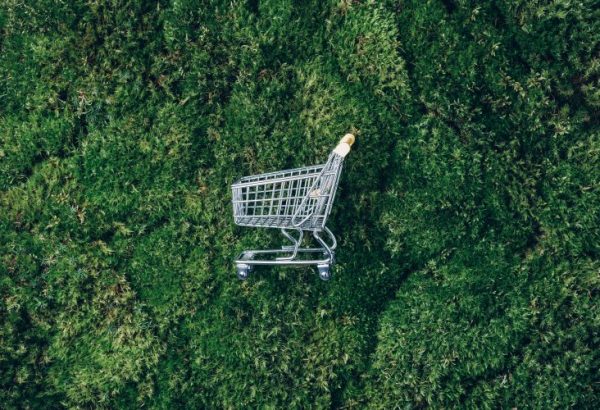
Sustainability: Is it now or never?
According to Sustain Web, there is no legal definition of ‘sustainable food,’ though other terms such as ‘organic’ and ‘Fairtrade’ are clearly defined.
Read more here…

Sensory seekers: altering the eating experience
Earlier this year I spoke on New Food’s Trend Watch panel, held in the iconic grounds of Twickenham Stadium, London. During this roundtable, my focus centred on the importance of sensory elements within food and drink. Here, I recap the key takeaways, including how suppliers can meet the growing desires of ‘sensory seekers’.
What does the sensory experience include?
The past few years have transformed consumer habits when it comes to food. How we evaluate our purchases, the times of day we eat and our perceptions of meal occasions have been altered by shifting political landscapes, a global pandemic, and a cost-of-living crisis.
The result is that consumers in 2023 will put more emphasis on the full sensory experience; from discovery, to purchase and prep and, of course, eating it! The challenge for brands and suppliers is to cater to this changing sensibility. And I believe that an understanding of the sensory experience at every touchpoint, will be vital.
Read more here…
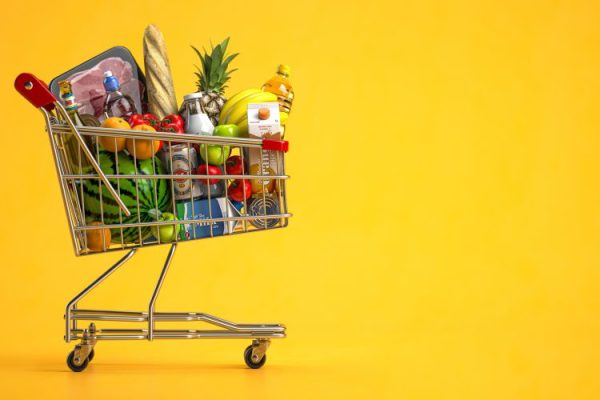
Supermarket responses to the consumer recession
Clive Black of Shore Capital examines the way retailers in the UK are adapting to a changed consumer-landscape, as the cost-of-living crisis continues to bite.
A succession of pressure points has meant that the supply chain to British supermarkets has had to absorb quite considerable increases in their cost bases, from raw materials and energy, both further spiked by Russia’s invasion of Ukraine, and the wider labour process, reflecting an amalgam of cumulative skills development failures in the UK, the benefits system, Brexit and the pandemic.
Indeed, suppliers are on their sixth or seventh wave of inflation since 2020, resulting in record-breaking food inflation levels. In isolation, such food inflation would be a bad enough squeeze on British shoppers, especially those on low incomes given the regressive nature of essentials inflation. However, that food inflation rests alongside a stepped adjustment in home energy costs and still elevated motor fuel prices. There is, therefore, a real squeeze on British household budgets
Read more here…


